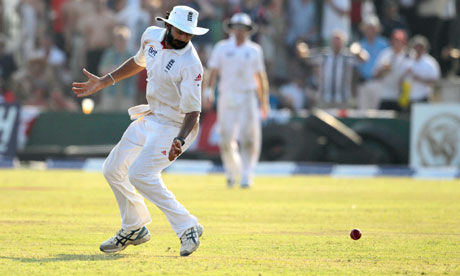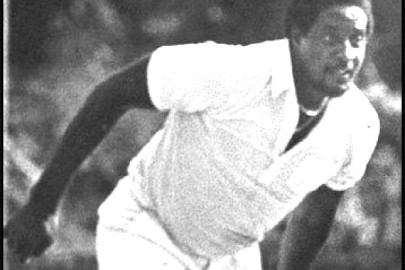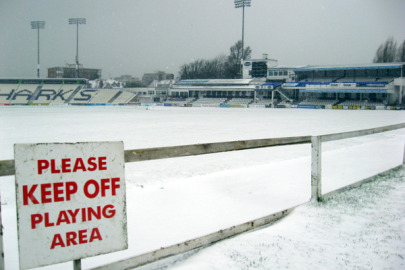Jon Hotten reveals cricket’s dirty little secret: nobody likes fielding…
In a game at the start of the season, we fielded for 47 overs in the bone-deep cold. The distant pavilion glowed like a cottage in the paintings of that old fraud Thomas Kinkade. The grass on the outfield was thick and stringy, the ground soft and heavy underfoot. I was wearing trainers following a pre-match incident with the sole of my boot. We didn’t even get drinks, but then they would probably have been brought out by a St Bernard. In the warming clatter of the pub afterwards, a team-mate said that he thought that the moments that the field came together after the fall of a wicket were a way of reconnecting with the game after the solitary time spent in one position or other. That seemed true.
No batsman goes to his grave thinking, ‘I wish I’d spent more time fielding’. Time in the field is the other side of an unequal equation. No-one can really like it can they? The only similarity between the two is the sense of absorption, although it is absorption of two different kinds. Batting really well (admittedly more of a memory than anything else these days) induces an interior state that you don’t really want to come out of, because when you do you have to confront ordinary life again. It is not something that you want to end. Fielding for long periods is about introspection of another kind, starting in bursts of claps and shouts and then slipping gently into fairly eventless solitude as the overs tick past.
In Netherland, Joseph O’Neill describes the ‘pulmonary’ rhythm as the field walks in and out. It’s a lovely image, but a little too lyrical for the aimless trudge it becomes after an hour or so. Fielding’s tasks are essentially menial: returning the ball to the bowler, stopping the odd one, hoofing after the ball when necessary (and what fresh hell is this relay throw – two of you chasing it now, can’t just leave it to the other bloke who’s you know, nearer…). The chance of a catch is a hiding to nothing, and a drop often reminds you of how withdrawn from the rest of the game you’ve become; its shame and embarrassment and exposure.
Not liking fielding is one of the game’s dirty little secrets. You have to pretend it’s alright. It’s a team thing, and more than that it’s a game thing, because if you didn’t field there wouldn’t be one. It’s different for bowlers, because it’s their arena and time in the field will be punctuated by what they do. But for batsmen it remains a deal made in order to play the game. It’s a deal that feels slightly different every time. Fielding before you’ve batted is different to fielding afterwards, and fielding after you’ve scored runs is different to fielding after you haven’t.
Most of all though it’s a mood thing. Sometimes, on a beautiful ground it’s just too churlish, too ungrateful, to do anything except be thankful that you’re there. Other times it’s about smothering anxiety, killing boredom, finding humour and life in the little things. Occasionally it’s just about getting it over with, and every now and again it can be extraordinary. The art is to do it while not doing it, to let it wash over you, its lulling effect opening the window to an implacably calm interior state that can resist its length and its demands and takes you somewhere else until you come up smiling.
Even so, 47 overs. I mean, come on…












This sings to me. The terrible combination of boredom and fear of a steepling catch coming your way.
As you say, fielding is the price you pay for being able to bat. But of course at cricket’s humblest levels – village, schools – the more it is the case that the best batsman are also the best bowlers, and teams are filled out by a rump of not overly enthusiastic specialist fielders.
(Incidentally, I think cricket’s real dirty little secret is that the ball is too hard, especially on cold days.)
Fielding is a big deal in baseball, and many a very indifferent hitter has made a living at second base or shortstop. (And many a clumsy slugger has been placed at first base, in hopes that he wouldn’t have to do much.)
Among the big names, there have been quite a few who were good both at bat and in the field: DiMaggio, Mays, Mantle, Clemente, Guerrero all come to mind, and no doubt somebody who knows the game better would think of more.
What a wonderfully evocative link to Kinkade’s cottage; it must have felt like January: slate-grey sky, biting wind, no hope of reprieve from an umpire’s light meter; early season reflexes as dormant as a hedgehog’s sex drive; the contemplation: give me 47 overs wandering the outfield or give me death; no easy answer. I remember Mitchell deciding to shake off early season lethargy by attempting to launch our fast bowler’s best effort into Derbyshire; you just knew he’d found the sweet spot; it was that completely rounded ‘Thwack’, no jagged edges in that chilling sound. The problem was he’d got too far underneath it and instead of the ball disappearing over the sightscreen on a trajectory similar to that of a red arrow on take off, it went a mile high reaching its zenith somewhere over deep mid-off. I took frozen hands out of deep pockets, muttered ‘Oh fuck!’, took three steps right, two left, four backwards, and lo and behold, caught it. The enthusiasm in the clapping of teammates was astonishing, and to this day I’m convinced they were simply trying to get warm.
John, brilliant, taking a catch with the old ‘winter hands’ should be worth double.
Brit re the ball, they definitely vary. The other week we played with a new Dukes in each innings – they’re beloved of bowlers because they feel smaller in the hand and the leather is stained very dark red. Batted against it in twilight and it was barely visible – bowler chucked down an accidental high full toss that neither me nor the wicketkeeper saw. But earlier in the game I stopped a well hit one, and had SEAM MARKS in my flesh. So avoid the Dukes…
Great post so many truths, really well written, great sensory language.
This made me think of other dimesions of fielding, namely: fielding in the cold, fielding in the heat, fielding as a sub for a higher grade, fielding with teammates who sulk on the field, daydreams you have while fielding, fielding with an injury and the unique comradery of fielding in the slips whilst the captain is elsewhere.